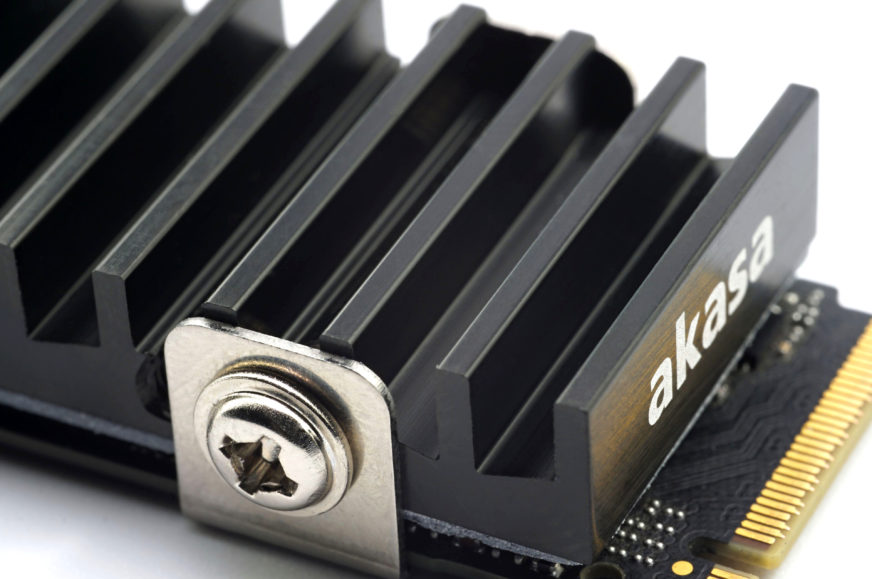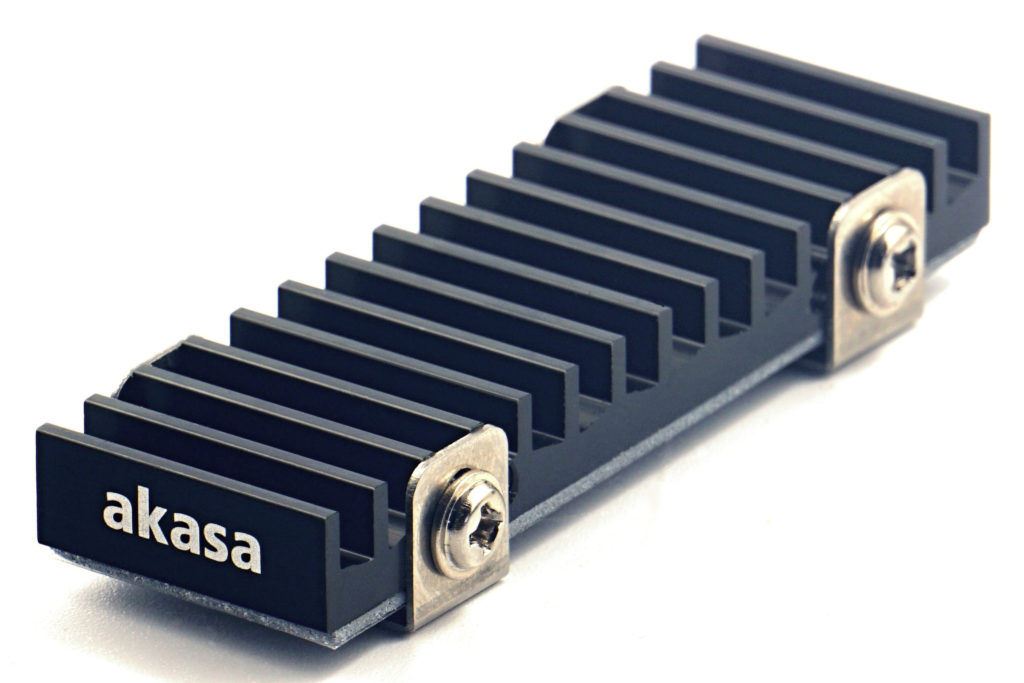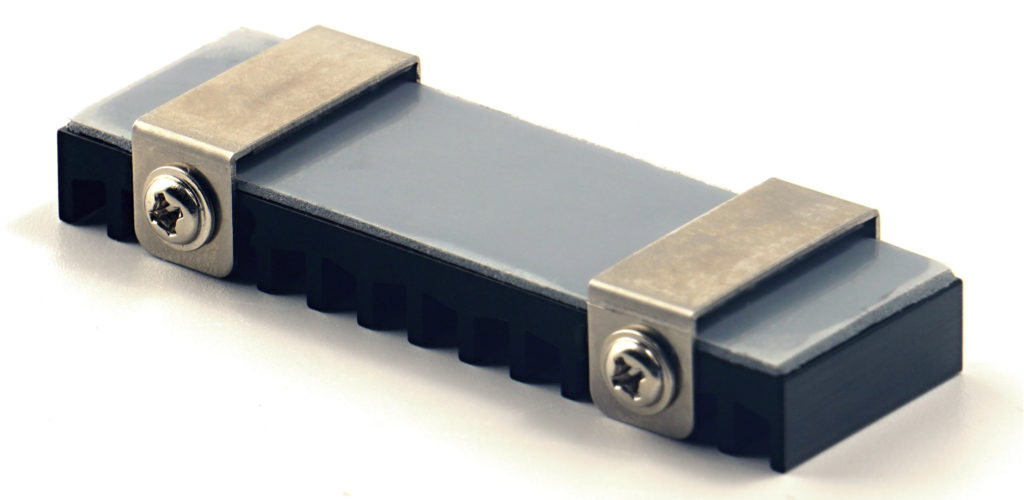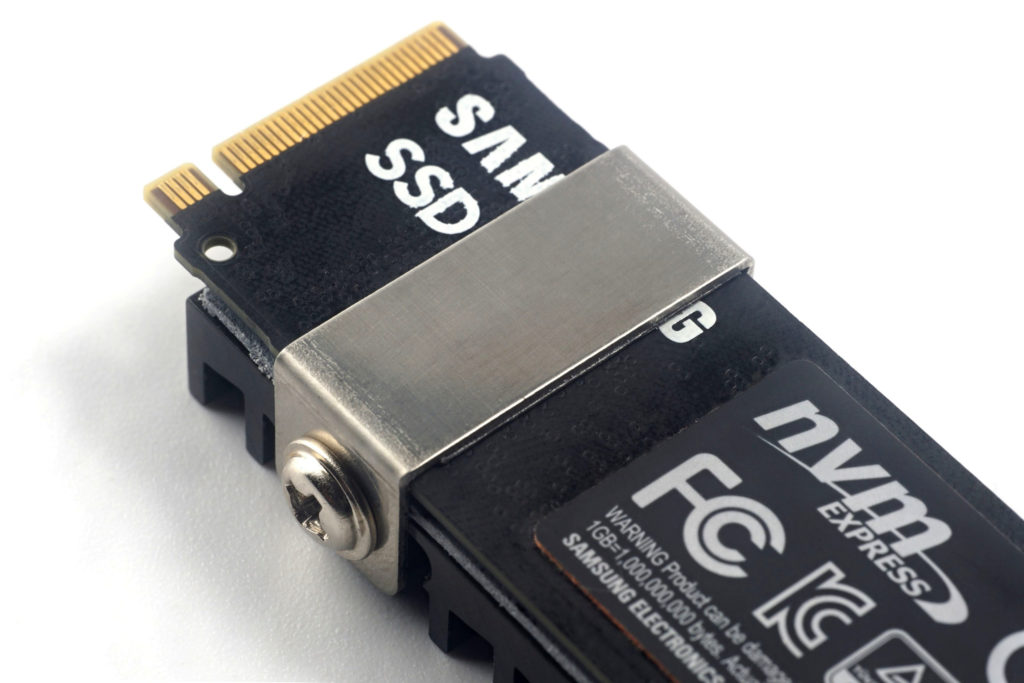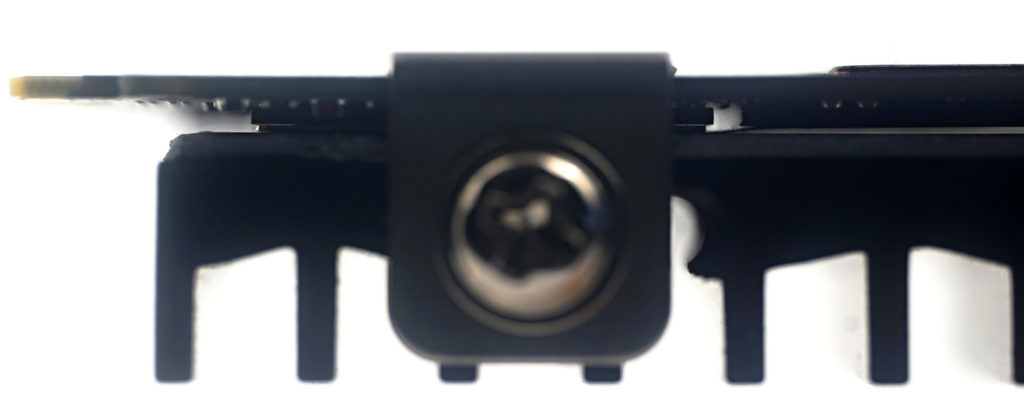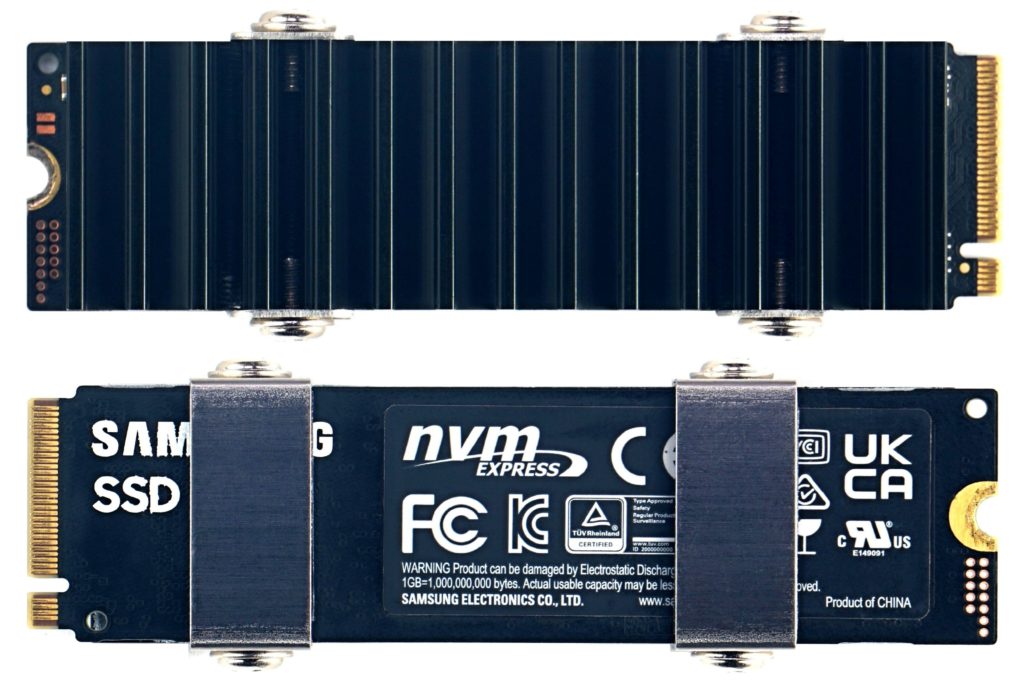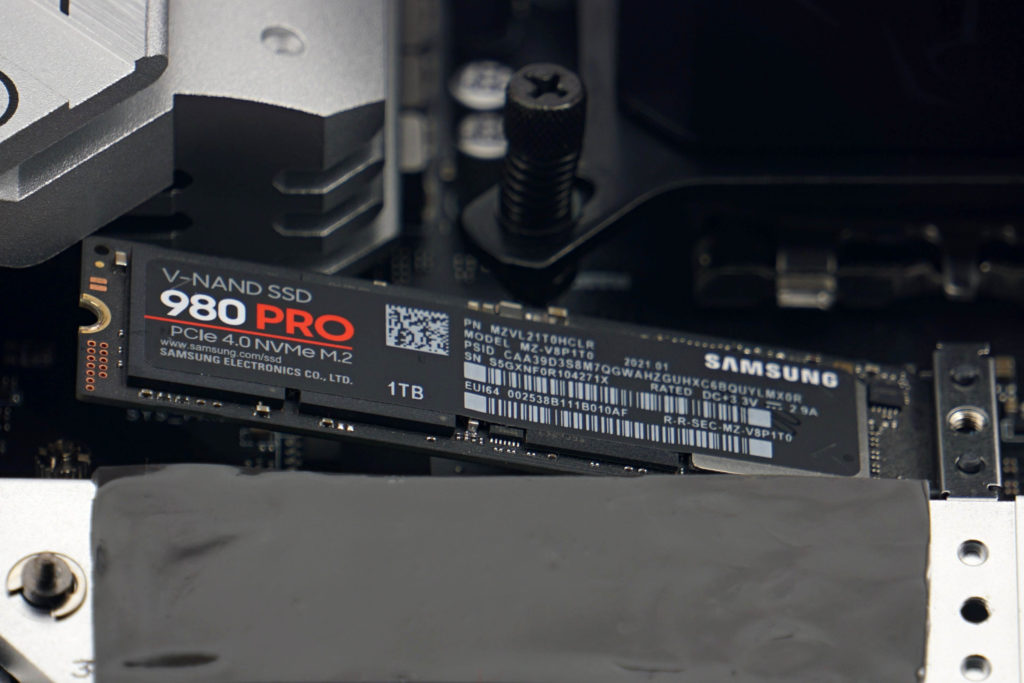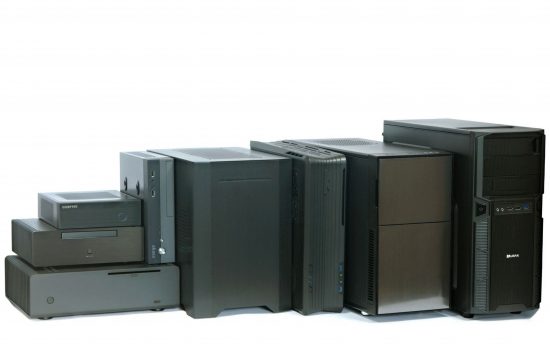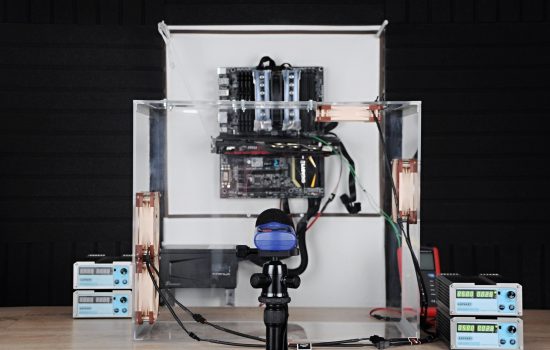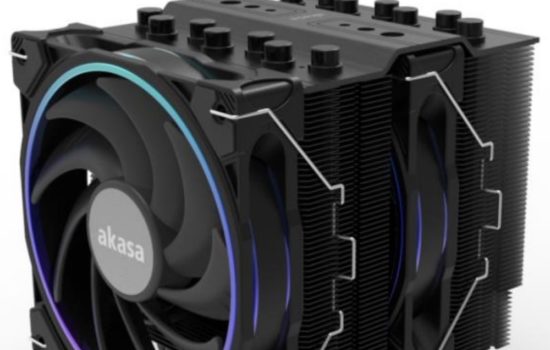The Akasa Gecko Pro cooler in detail
The successor to the SSD cooler, which didn’t have much competition in its price range. That’s one way to introduce the Gecko Pro, which is a bit more expensive, but also more refined (in terms of mounting as well). And it also has a distinctive feature that clearly distinguishes it from other coolers – the fins are not longitudinal (as is common), but in width. The price to cooling performance ratio is again excellent.
The Akasa Gecko Pro cooler in detail
The heatsink of the Akasa Gecko Pro is an aluminium monolith with fifteen 1.5mm thick fins. Even more efficient coolers usually have significantly fewer fins because they follow the length of the cooler. With the Gecko Pro, the fins are in a row along the shorter side.
What is important is the total surface area, and this cooler is not so different from other designs, and it can even be smaller, as it is, for example, in comparison with the Axagon CLR-M2. However, the advantage of the Gecko Pro is the larger gaps through which the air from the case’s system fans can flow more efficiently. Of course, the orientation of the fins will also have some influence on the final result, but don’t pay too much attention to it.
The larger number of fins of the Gecko Pro (compared to heatsinks with longitudinal finning) could theoretically be advantageous in making the incoming airflow more turbulent. This is important from the perspective of the most efficient heat dissipation. On the other hand, the air may not get in in as much quantity to the locations it would in models bundled along the length of the body. The air circulation could be quite efficient because the spacing between the fins is up to 3.5 mm. With respect to the layout and setup of fans in the case, the efficiency of not only this but all coolers can vary.
Akasa supplies the Gecko Pro cooler essentially already assembled. The heat sink, thermal pad and retaining clips are all together straight out of the box. There is no backplate supplied with the cooler, and Akasa lists optimization for “single-sided” SSDs in their materials. That is, for such models that have both controllers and memory on only one side of the PCB and are also a bit slimmer (than double-sided SSDs). However, you can also install the Gecko Pro cooler on SSDs with memory on the back. The brackets can be spaced out by the height of the memory and mounted appropriately. The mounting holes are twice as tall as the thread height (M3) of the screws. However, cooling the memory from underneath will not be as effective as with coolers with backplates.
Before installation, the brackets that push the SSD through the thermal pad to the heatsink must be unscrewed. Although the brackets are metal, their contact surface with the SSD is properly electrically insulated with a plastic insert.
Depending on the specific SSD, the position of the brackets can be customized a bit. Each can be screwed either between the third and fourth fin or between the fourth and fifth. Thanks to such regulation, it is possible to better adapt the pressure to, for example, the SSD controller. Always choose the position in which the cross-sectional area of the bracket overlaps the controller area more. For memory, choose the one that is more centred with respect to the position of the modules. When it’s roughly similar, you won’t go wrong by using mounting positions nested deeper into the cooler. Then the SSD will, for example, also due to the height differences of the M.2 slot and the spacer on the other side, sag less (and thus there will be better contact with the heatsink even in critical places).
It is also worth praising the fact that the thermal pad here is considerably thicker than it was in the previous model, even though it is “only” one millimeter thick. This way, the cooler is also better adapted to the needs of SSDs with larger height differences between the chips that are of cooling interest (i.e. between the controller and the memory). The installation is thus solved better and it’s more robust overall than it used to be with Akasa’s older cooler system, which was installed to the SSD with a thin sticker. Only SSDs with a length of 80 mm are compatible. The cooler is too short for longer models, too long for shorter ones (the rear bracket will be practically off-axis even with 60 mm SDDs).
The weight of the Gecko Pro’s heatsink (25 g without the brackets) is similar to that of the Axagon CLR-M2 (22 g without brackets). In height, the Akasa cooler is 8 mm (8.7 mm with the addition of a slightly compressed thermal pad), with which it is low-profile enough not to interfere even with the PCI Express expansion card above it.
Methodology
The tests take place in a wind tunnel that replaces a standard computer case. Four Noctua NF-S12A PWM@550 rpm fans are used for system cooling in a balanced ratio of two intake to two exhaust fans. The intake air temperature is strictly controlled and is kept within a narrow range of 21–21.3 °C for maximum accuracy.
In line with findings from measurements of the impact of different positions on cooling efficiency, we test separate SSD coolers in the first slot, above the graphics card. From board tests we naturally have a lot of results of coolers (referred to as cooler 1 and cooler 2) from other positions as well, but there it is due to their fixed position.
For testing, we use the Samsung 980 Pro SSD. The load is run for 10 minutes (which is enough time in the wind tunnel for temperatures to stabilize) in CrystalDiskMark – sequential read and write cycles. The achieved power draw then is about 8 W, which is the upper limit of what M.2 SSDs achieve and shouldn’t change even models with PCIe 5.0 interface support.





